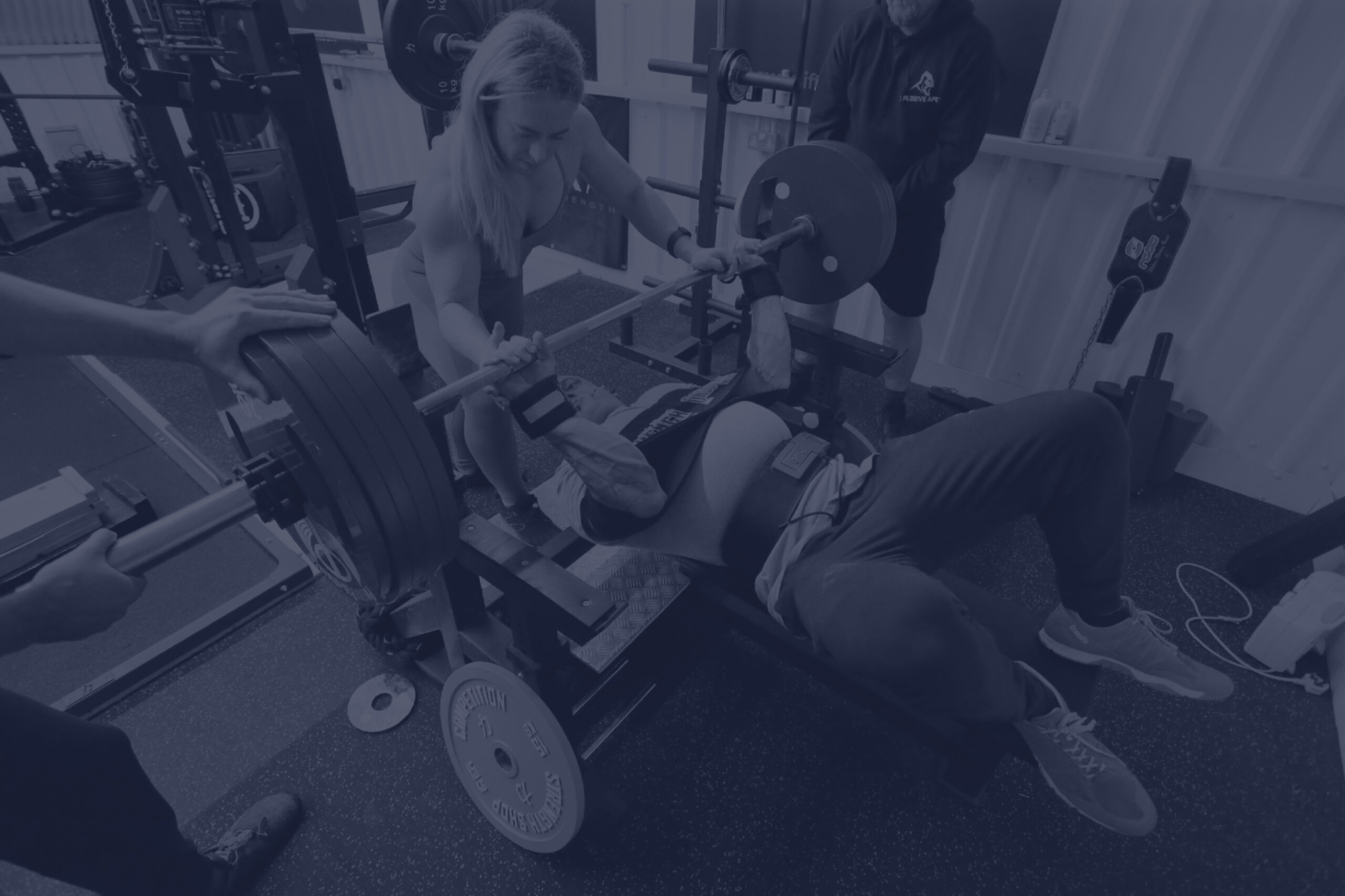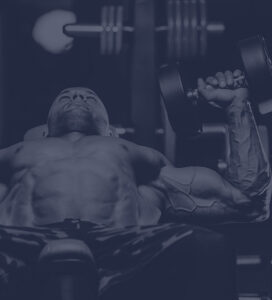Knowledge
Hypertrophy: The Death of Compound Lifts?
Articles, Muscle gain, Strength and performance, Training

A lot of the most recent research coming out is pointing quite strongly to mechanical tension being the most important stimulus for hypertrophy. And I’d be inclined to agree; it makes a lot of sense considering the methods that seem to be the most effective for hypertrophy (at least in those without the assistance of PEDs) and the logic definitely follows.
What this seems to have sparked however is a trend of coaches spouting off about the “optimal” exercise for every single muscle. Basically, now that mechanical tension is the be all and end all for hypertrophy (supposedly) coaches are essentially saying that only specific isolation movements are now worthwhile hypertrophy movements.
Why? Because, unsurprisingly, isolation exercises place a greater degree mechanical tension on to THE SPECIFIC TARGET MUSCLE compared to compound movement. Well, duh, hence why it’s an isolation exercise. It places all (or at least a very large proportion of) the mechanical tension on the individual muscle it’s designed to target. Ground-breaking stuff right there. I mean, if they didn’t do that they’d be completely pointless wouldn’t they?
But do they have a point? If mechanical tension is the king of hypertrophy then why would we waste time doing compound movements that don’t place maximal tension on any specific muscle group?
Well first let’s look at the other factors that help effect hypertrophy so we can get a clearer picture of how we maximise hypertrophy.
Not JUST Mechanical Tension
Volume
There are still plenty who believe that volume is the main driver for hypertrophy. And, in fairness, they have some good reason to think so. I mean, the principle of progressive overload is pretty much universally accepted. So when training for hypertrophy why can we not simply progressively overload through a gradual increase in volume.
Remember, volume (as in amount of work done) IS NOT sets x reps. It is sets x reps x load. So increasing volume doesn’t necessarily mean increasing the number of reps/sets constantly, it could mean performing the same number of total reps at a higher load.
But there are a few problems here.
Firstly, if volume was the main driver of hypertrophy then eventually over time we would all need to spend progressively more and more time in the gym to meet the required threshold. At some point, advanced lifters would need to be training 6+ hours every day, but if anything we see the opposite. Often the most advanced athletes need to train LESS than their intermediate counterparts, as they are capable of training at a higher intensity. So not only do they get the required stimulus from less work, but they’re not capable of recovering from the same volume due to the higher average intensity.
Secondly, if volume were the main driver for hypertrophy then high intensity, low volume programs such as DC Training wouldn’t work. Or rather, they would work at the very beginning but then would stagnate very quickly. But this isn’t what we see. While this style of training program doesn’t work incredibly well for everyone, it’s definitely created of very muscular physiques.
In reality, the role that volume plays in stimulating hypertrophy is more that of a threshold requirement. What I mean by this is that we need to hit a minimum volume of work for hypertrophy to be stimulated. We can’t simply do one rep with super high mechanical tension and hope to get a hypertrophy stimulus from this. By the same token we can do as much volume as we want, but if the mechanical tension is not high enough then it will also have little to no effect.
The other thing to remember here is that our threshold volume for hypertrophy is also adaptable. The more you train, the more adapted you become to the stimulus. But the answer isn’t to just progressively do more volume. The answer is to regularly re-sensitize your body to the training stimulus through de-loads or periods of reduced training volume.
Just think about how sore you get if you go on vacation for a few weeks and don’t train. You come home, do 3 squats with the empty bar and then end up walking like a family of raccoons mauled your legs the next day. Your body un-adapts to the training stimulus.
This is why in our latest hypertrophy program “Periodized Bodybuilding” uses a periodization scheme for volume. Each block is progressively higher in volume BUT the final week of each block is a volume de-load, to ensure the body doesn’t adapt to the high volume. Likewise, this is why we also recommend taking a week off or doing 2-3 weeks of very low volume work after completing this plan.
Stretch-induced hypertrophy
We now also have evidence (to confirm what we already suspected) that stretching under load is also a stimulus for hypertrophy. Currently we have studies that illustrate this mechanism in a few muscle groups, including biceps and quads. But that doesn’t mean it doesn’t apply to all muscles, it just means we haven’t managed to prove it yet.
During the eccentric phase of a lift, the sarcomeres are lengthened under load, if this lengthening reaches a certain degree then it will trigger mTOR, which is a crucial pathway in muscle hypertrophy. Essentially, mTOR is triggered as a protective mechanism to strengthen the muscle as it was put under load in a position where it could have been damaged, and the body doesn’t want that (funnily enough).
But this is why exercises that place the target muscle in a stretched position under load CAN be more effective for hypertrophy.
Remember you need to be under load/tension in this stretched position for this to occur. So no, your bikram yoga won’t give you a hypertrophy response I’m sorry. If there is no load and/or you are relaxing in to a position (i.e. releasing tension) then it will do nothing for your gains. However, this is why loaded stretching can be a great, low stress way of adding more hypertrophy stimulation to your programming. But I won’t rant on about that as you can simply go and read Christian’s articles about it
Lactate
Lactate is also technically anabolic. No, “feeling the burn bro” really isn’t THAT important for hypertrophy, despite what your mate in the stringer vest may tell you. But it can have SOME effect. When we create high levels of lactate within a muscle we see an increase in mTOR as well as the number of iGF-1 receptors. Both of which are very positive things for hypertrophy. Not only that, but high levels of lactate also down-regulates myostatin (which inhibits hypertrophy).
The best way of looking at it is that creating high levels of lactate can make us MORE RESPONSIVE to the hypertrophy stimulus. But this is useless if we don’t first create a stimulus through correct mechanical tension and volume.
Lactate dominant training can therefore however have a meaningful place in a hypertrophy program, especially perhaps for those who are unable to train heavy enough to place a high degree of mechanical tension on the muscle group as it can make us more responsive to the diminished hypertrophy stimulus we create.
So why do we need compound movements again?
Well, from a strictly physiological standpoint it kind of looks like we don’t. But there are two important factors that we’ve not considered yet.
1 – Neurological Adaptations
Even if your goal is maximal size/hypertrophy you should still be concerned about improving the efficacy of your nervous system. Why? Because a more efficient nervous system more readily recruits the high-threshold motor units (HTMU). These HTMUs control the fast-twitch fibres, which are the fibres that have the potential for growth (slow-twitch fibres have little to no potential for hypertrophy). So these are the fibres that we want to recruit during as much of our work as possible.
In beginners, isolation exercises lead to VERY little neurological adaptations. They simply can’t move enough weight on them to impose enough of demand on the nervous system. So their nervous system doesn’t become better at recruiting the HTMUs (and therefore fast twitch fibres). So they end up spending the majority of their time NOT stimulating the muscle fibres that have good potential for growth.
This is where compound movements are important (at least during the beginner/intermediate stages). The potential for greater loading makes these movements much better at “teaching” the nervous system to recruit the HTMUs and also increase the firing-rate of the fast twitch fibres. Not only this but these compound movements will also improve inter and intra-muscular coordination and stability. All of these things in turn allow us to perform better even on isolation based movements.
These adaptations then allow us to move more load on these isolation movements and impose more mechanical tension on the target muscle, making them more effective.
Just think, how many people do you see around the average gym working (reasonably) hard on bicep curls, cable flys, leg extensions all year round but never getting any growth? Chances are these movements aren’t being loaded heavy enough or being performed well enough (with enough stability) to place sufficient mechanical tension on the target muscle to cause a hypertrophy stimulus.
2 – Volume Management
So once we have a nervous system that recruits HTMUs and fast-twitch fibres well and go a good degree of stability/coordination we can just move to isolation exercises right??
Well, not quite.
Firstly, you will need to keep SOME compound movements in your training to maintain the neurological adaptations that we spoke about previously. If you drop all of this type of work then these adaptations will fade over time back to baseline. Just like an adaptation that is no longer receiving a stimulus.
So, there’s that. But there’s also an even more important reason.
Compound movements are economical in terms of training volume. Ok, they may not give us MAXIMAL mechanical tension in any singular muscle group. But they can give us HIGH mechanical tension in SEVERAL muscle groups at once. Importantly, a high enough level to still stimulate a hypertrophy response in those muscle groups.
Think of it this way, lets say we need 25 maximally effective reps (MERs) per muscle group to stimulate the desired hypertrophy response.
see my previous article for an explanation of maximally effective reps

If we do purely isolation movements we can get 5 or 6 MERs per work set for that muscle group per set (since the isolation movement allows us to place maximal tension on that muscle). So our pressing workout would need to look something like this:
Press Workout Example 1
Cable Pec Fly – 5 sets of 8-10
Dumbbell Front Raise – 5 sets of 8-10
Rope Tricep Pressdown – 5 sets of 8-10
Here we would be getting 25-30 MERs for pecs, front delts and triceps over 15 work sets and a total of 120-150 reps.
Now let’s say we wanted to use a compound movement instead. Since it doesn’t give us maximal mechanical tension on any individual muscle group lets say we can only get 4 MERs per muscle group per set:
Press Workout Example 2
Incline Bench Press – 6 sets of 8-10
This will score us 24 MERs for pecs, front delts and tricep but in only 6 work sets and 48-60 reps. So we’ve achieved ALMOST the same stimulus for those three target muscle groups in less than half the volume.
Yes, compound movements are more taxing on the CNS but doing half the volume on one compound movement is still going to be considerably easier to recover from than 5 tough work set on three different isolation exercises.
The other obvious benefit here is the time efficiency. Achieving almost the same stimulus in less than half the number of sets is a big plus for the 99% of us who train but also have jobs, families and other commitments.
Remember we ideally need to stimulate every muscle 2 or 3 times per week to maximise hypertrophy. So if you needed to do something like Example 1 three times per week as opposed to Example 2, that’s a huge amount of time saved. And that’s just looking at the pressing muscles, amplify that to your whole body.
This may also allow that person to train more regularly (due to the time efficiency), which will be much more productive in the long-term.
Now, before someone brings it up, yes IFBB pros (and similar athletes) train primarily using a high volume of workload on isolation-based exercises. This is good strategy for them for several reasons.
Firstly, with the amount of muscle some of these athletes are carrying the stimulus they require to grow is simply to high to achieve via compound movements, it would fry their CNS. Imagine someone like Kai Greene would need 600lbs for 6-8 sets of 8-10 reps to get an appropriate hypertrophy stimulus for their quads. Not only would their nervous system be ruined but their lower back/core would likely give out before they reached that threshold.
This is essentially why split routines were developed by bodybuilders. It allowed them to give the required level of stimulus to each muscle group, which is super high, without burning out their nervous system. That’s not to say they won’t do ANY compound movements because in the majority of cases they will. It will just make up a smaller portion of their volume and be selected to focus on the muscle groups for that specific day.
But remember these athletes are (usually) on large drug doses AND have adapted over time to handle the volume of work they are doing in those sessions.
But for average people, or even people who are not “super enhanced”, then trying to achieve maximal stimulation for every muscle group, several times a week would lead to a training program that just isn’t do-able. Maybe if they had no job and no real life stress it could be doable; but outside of that it’s just not realistic.
Really Anti-Climatic Conclusion
Therefore it makes sense for the vast majority of people to keep a decent amount of compound movements in their training to:
A, allow them to get the desired level of hypertrophy stimulus (which won’t be as high as our IFBB pro) through less volume and time
B, continue to improve (or at least maintain) neurological factors to allow them to keep maximising the recruitment of HTMU and performance during isolation/hypertrophy targeted work
Now, when doing isolation work should you be using the exercises that optimally place mechanical tension on the target muscle? Yes, of course you should. This whole, “optimal isolation exercise” movement isn’t all bad. If it leads to trainees making better choices about what isolation exercises they pick then it’s great.
But as always, what is truly optimal is very boring and right in the middle of the two extreme schools of opinion:
Compound movements DO have a very useful place in a hypertrophy-based training program. But will likely leave some muscles under-stimulated (which will depend on body proportions, exercise selection etc.)
Isolation movements SHOULDN’T make up the entirety of your training program as it is inefficient in terms of time/volume and leaves neurological factors neglected. BUT to exclude them completely would leave you under-stimulating at least some muscle groups. So use them, but use them for the muscle groups that NEED them.


